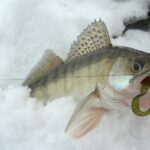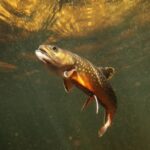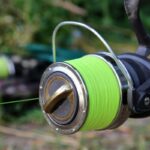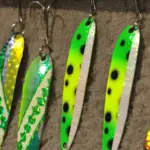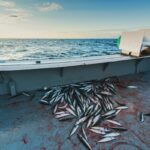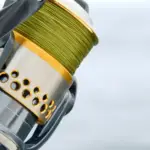Any angler knows that the walleye is one of the more challenging fish to catch, but once you reel one in the sense of achievement almost tastes better than the fish does itself.
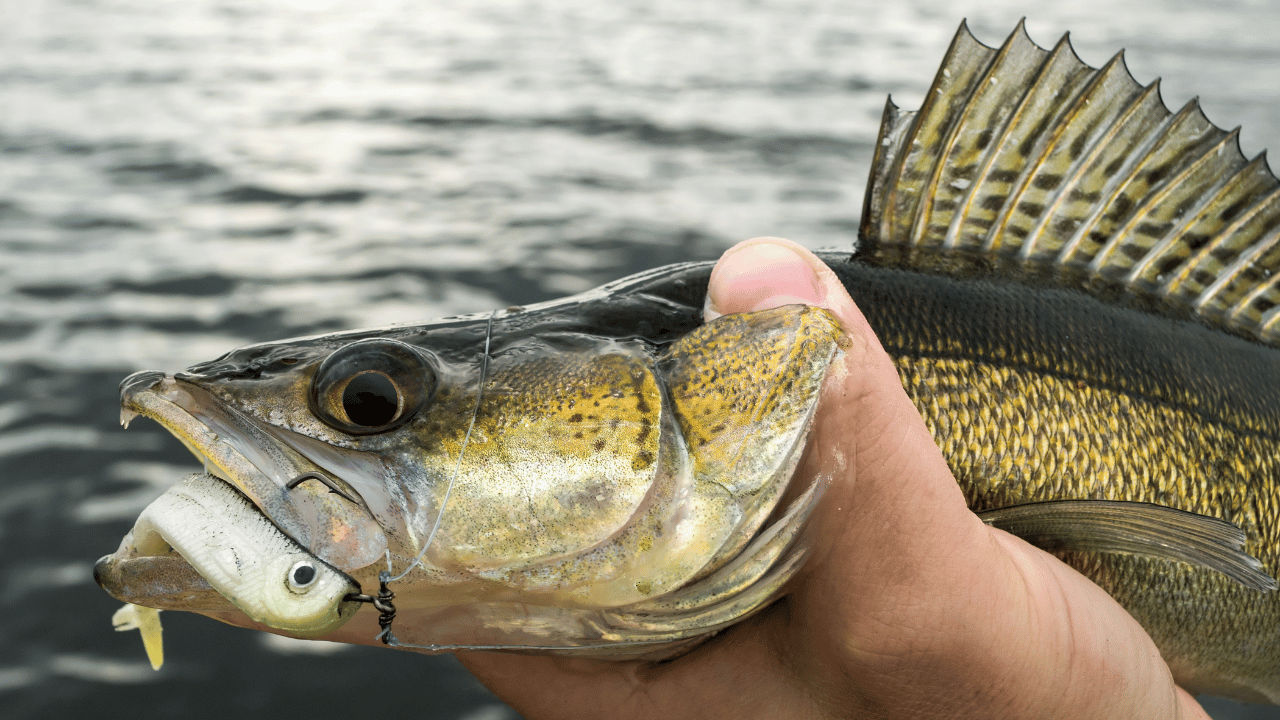
Walleye have eyes that are sensitive to the light, so they tend to want to stay deeper down where it is darker. This is why they can be especially tricky to catch in the summer but by using a bottom bouncing rig, you are given a whole new advantage.
In this guide, we will cover everything that you will need to know about the bottom bouncing rig for walleye including what a bottom bouncer is in more detail, how to use it, what size of the bottom bouncer to use, and how to rig it to use for catching walleye.
What Is A Bottom Bouncer?
The bottom bouncer was invented by an angler in South Dakota a few decades ago and can be used in multiple different ways.
A bottom bouncer looks like an L-shaped wire with a weight in the shape of an oval in the middle of the longest section. The notch in the corner of the L is where the mainline is tied before it is attached to the leader to the snap swivel.
The bottom bouncer can be used for trolling as well as from the shore and has two main advantages which are to keep your bait close to the bottom and to help prevent the bait from getting snagged on things.
Trolling with bottom bouncers allows the bait to hit the bottom of the water and make it bounce as the line is being dragged by an angler or boat.
This disturbs the bottom by stirring up sand or mud on the ground, creating a disturbance that the fish will pay attention to and thus making them more likely to follow the bait.
Bottom bouncers are great for trolling with this method because they keep the bait in the correct position as it is being pulled.
It also allows you to use larger baits than would normally fit through a conventional hook without having to tie a special loop knot.
With a bottom bouncer, you can reach speeds of over 2 mph, but you can also slow down at a mile per hour or less.
You are able to fish in both shallow and deep water and can fish slow or fast which gives you a lot of flexibility, and you don’t even have to pay that much attention as you can simply put your rod in a holder whilst it catches the fish.
Rigging A Bottom Bouncer For Walleye Fishing
When rigging your bottom bouncer for walleye fishing, the first thing you will need to do is tie it to your mainline with a size that is slightly stronger than the leader.
Then, attach the leader to the bottom bouncer’s snatch swivel so that the leader is between three and seven feet long with a test fluorocarbon weighing eight to 10 pounds.
Using a crawler harness (also known as a spinner rig) is recommended when fishing for walleye which creates a flash in front of the bait with a blade.
The size of the blade that you use depends on how slow you plan to fish because the bigger the blade, the more speed you will have to create in order for it to spin.
As well as this, if you are fishing in dark, dirty water, you will need a spinner rig that is bright and flashy so that fish can see it. However, if you are fishing in clear water, you should use blades that are either natural or metallic.
The size of the bottom bouncer you use depends on the depth of the water that you are fishing in, there is a general rule that you should use one ounce for every 10 feet of depth.
This is to make sure that the bottom bouncer is able to sink all the way to the bottom.
When you are using a bottom bouncer when fishing for walleye, it is best to cast your line from a 45-degree angle before allowing the bait to naturally sink to the bottom of the water.
You should be able to tell when the bottom bouncer has reached the bottom and from there you can let it drift naturally along the bottom as too much disturbance can scare the walleye away instead of intriguing them.
You should balance the mainline between the rod and the tip by keeping the line tight as this will help you feel what is going on with the bottom bouncer by feeling the small vibrations with your hand.
This will also help you understand if you need to adjust anything such as the angle of your rod or the position of your bait on the bottom.
You will know if a walleye has bitten down on your bait by paying attention to the tension between the rod and the mainline, if you feel a sudden pressure then it is a clear sign that you have something on the other end of the line.
However, keep in mind that this line should not be too tight as it will give the walleye more of a chance of snapping it as they can be quite strong.
Best Bait For Walleye
The best bait that you can use when fishing for walleye depends on what season you are fishing in as the feeding behaviors will change.
Generally, walleye like to eat minnows, leeches, and nightcrawlers, but we will go into a bit more detail on what time of year you should use them.
Spring
In the first few weeks of spring, walleye will begin to move into areas that are more shallow where they will start to spawn. This is the time that they will feed mostly on small fish which is why you should opt for minnows during this time.
As spring starts to reach its tail end, it is best to switch to nightcrawlers as this is when walleye will naturally hunt for them. This is because the melting snow makes the water levels rise, washing the nightcrawlers out of the soil.
Summer
In the summer, you can still use nightcrawlers, but leeches also become a good choice because both of these types of bait are naturally more active in the summer months.
You may want to change between using nightcrawlers or leeches as it can depend on what body of water you are fishing in.
Fall
Fall is when a lot of fish are hatching and the walleye take advantage of this without hesitation, filling themselves upon groups of small newly hatched fish so that they are nice and fat for winter.
You can still use nightcrawlers and leeches, but you may be met with more success if you use minnows because this is what the walleyes will have their eye on anyway.
Winter
When you are fishing for walleye in the winter, it is known as ice fishing and is a very popular choice among anglers.
You must wait until the ice is thick enough to fish on, but once it does, you should keep to using minnows because small fish are still their go-to during the winter and walleye will simply ignore nightcrawlers if you try to use them during this time.
Other Rigs You Can Try For Walleye Fishing
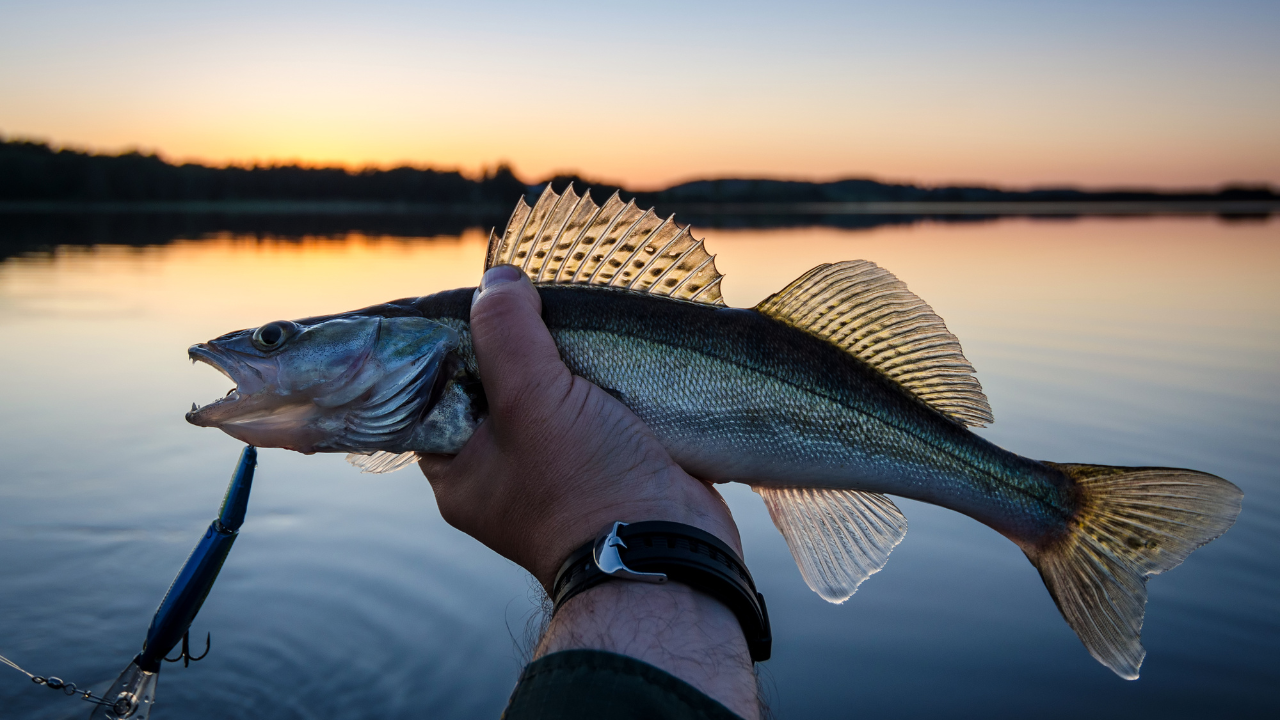
Lindy Rig
The lindy rig is very similar to the bottom bouncer except it allows you to have your bait even closer to the bottom of the water, but that comes with some extra risks of getting snagged.
A lindy rig consists of a snap swivel, sliding sinker, and a leader that has a snelled hook, but some also have a sliding float that makes it float just above the bottom instead of dragging fully across it which helps decrease the chances of it getting snagged.
Drop Shot Rig
The drop shot rig is one of the most versatile rigs you can use, and you will often see anglers experiment with them to get the most out of them. They are most used for catching bass, but you are able to use them for walleye as well as it uses a weight where the bait is to keep it nice and low to the bottom of the water.
Slip Bobber Rig
Another popular rig used for walleye fishing is the slip bobber rig which is made up of a slip bobber on the mainline that is attached to a swivel which is then attached to a leader with a hook on the end.
You can also add a sliding bullet weight between the slip bobber and a rubber stop can be placed above the bobber to help you control the depth of the bait.
Summary
Bottom bouncer rigs have changed the walleye fishing game as they work with the natural behavior of the fish which allows you to catch a lot more than you would normally.
Using this rig also gives you the opportunity to change depths and speeds quickly when trolling, and you don’t have to collect a wide range of bait either.
Depending on the season, the only live bait that you will need in your arsenal are minnows, leeches, and nightcrawlers, and before you know it, you will have walleye coming out of your ears.
The bottom bouncer is very easy to use and is a great rig to start off with when walleye fishing but if you find that this particular rig is not working for you for whatever reason, you can always try another similar rig such as the lindy rig, drop shot rig, or the slip bobber rig.
- Do You Need An Indicator For Nymph Fishing? - November 16, 2023
- Fishing Safety Tips For Families - September 25, 2023
- What Is The Best Time To Night Fish At A Lake? - September 18, 2023


